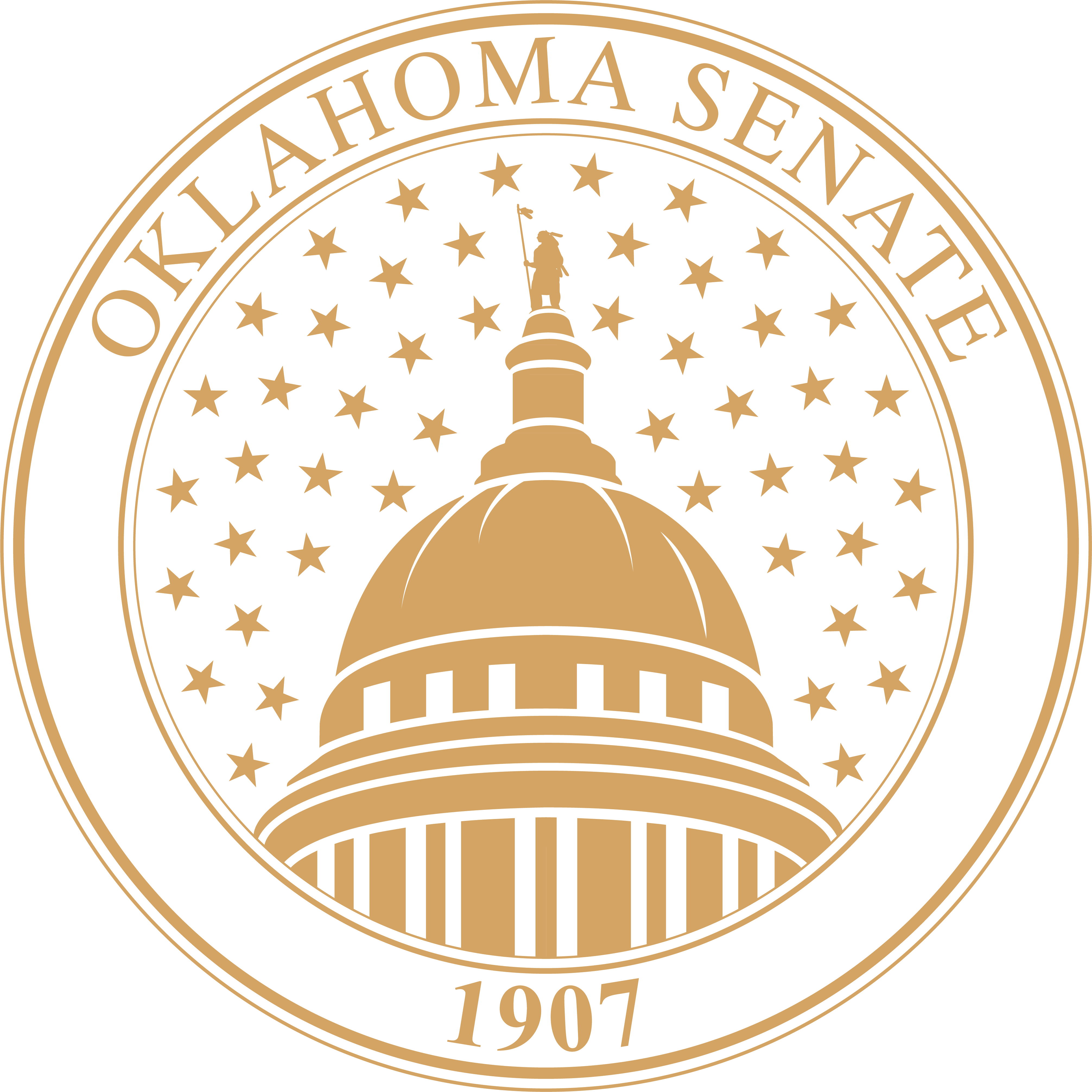In order to provide equal access and equal opportunity to people with diverse abilities, this site has been designed with accessibility in mind. Click here to view
Corp. Comm. Stats Show Bell Can Afford School Investment, Senator Urges Examination of Earnings Numbers
Statistics compiled by the Oklahoma Corporation Commission indicate Southwestern Bell has made and will continue to make ample earnings to justify a significant investment in public school technology, according to a Senate leader who is pushing for commissioners to secure such an investment.
"Given what Bell stands to make in a new regulatory environment, I don't think there's any question that the telephone company can afford to make a significant investment in public school technology. I would urge the Corporation Commissioners to take a close look at the documents produced by their own staff before they sign off on a final deal with Bell," said Senator Cal Hobson, chairman of the Senate Appropriations Subcommittee on Education.
According to commission statistics presented at a telecommunications task force meeting in July, Bell has been earning $91 million in excess of their mandated rate of return each year since its rates were frozen by legislation in 1997. If an alternative form of regulation drafted by the Corporation Commission is ultimately implemented, those profits would continue in perpetuity, with earnings possibly rising each year as the costs of delivering telecommunications services continued to decline.
"Charitably, I think we can estimate that this new form of regulation will net Bell approximately $100 million in additional profits each year, possibly more if trends continue and industry costs continue to drop. I think it's appropriate to ask Bell to invest a percentage of those future profits in the public schools because they're going to be one of the biggest beneficiaries of an improved education system," noted Senator Hobson.
"Anyone who claims that Bell can't afford to help the schools hasn't looked at the numbers. Alternative regulation is going to result in a huge windfall for the telephone company and we need to make sure education gets its share, just as it was supposed to in the settlement of 1995."
The last time the Corporation Commission conducted a rate review of Southwestern Bell was in 1992. The regulatory panel ordered the telephone company to refund consumers millions of dollars in overcharges, but Bell appealed the order, ultimately negotiating a $640 million settlement in 1995.
Bell ultimately ended up keeping about one-third of the settlement, some $228 million, when consumers opted not to use a series of vouchers and temporary free services offered by the phone company. For example, public education was supposed to get $30 million for new technology, but because many schools didn't have the equipment to take advantage of the offer, only $2 million was ever distributed.
The 1995 settlement underscores several points, according to Senator Hobson.
"The settlement gives you an idea of the amounts of money that can be involved when you're talking about what is, in effect, a state-sanctioned monopoly. It also set a precedent for the state asking Bell to invest in things that benefit the public, namely education, as part of a regulatory agreement," said Senator Hobson.
"In light of the way the 1995 settlement was structured, I don't think we're breaking new ground by asking Bell to invest in school technology. The key this time around is to make sure the money is actually delivered to education."
The Corporation Commission has already approved the first-phase of a two-part regulatory settlement with Bell. While the first-phase changes the form of regulation that governs Bell's local phone operations, the second-phase is expected to include a cash settlement that will require the telephone company to make certain investments in Oklahoma.
The commission is expected to finalize the agreement later this year. It must then be approved by the Legislature.
 Oklahoma Senate
Oklahoma Senate

